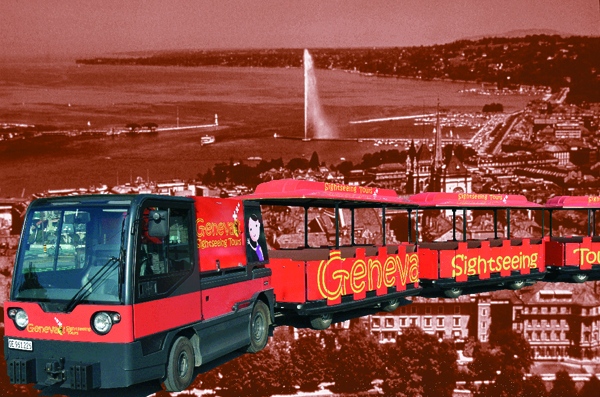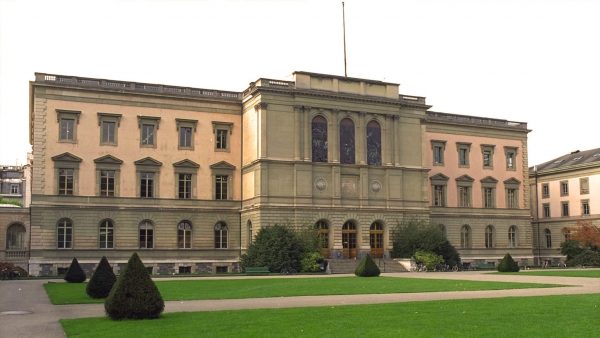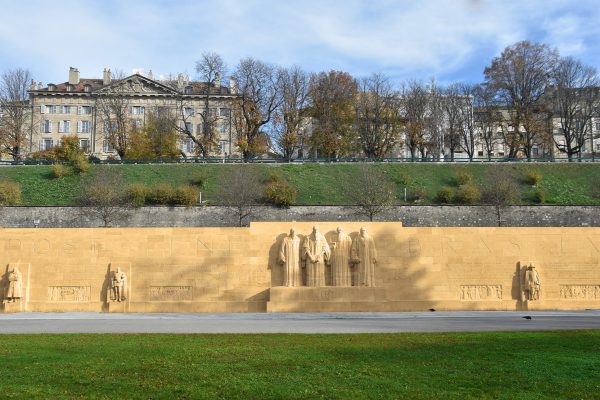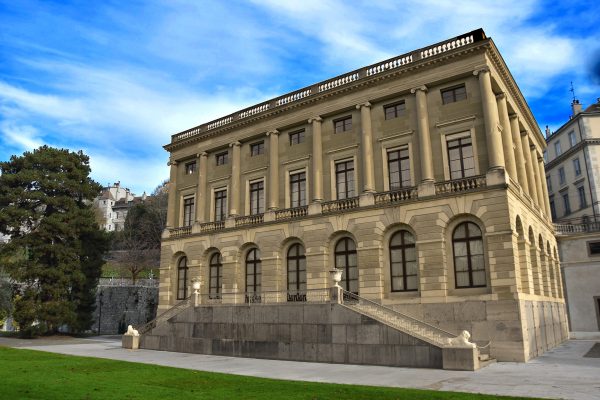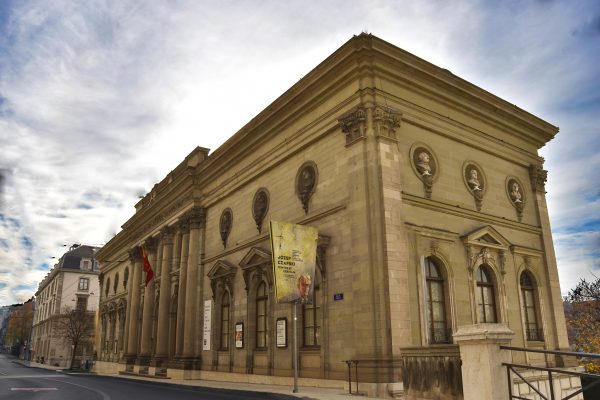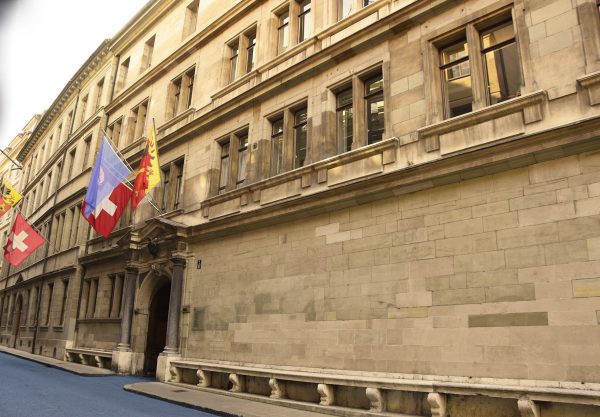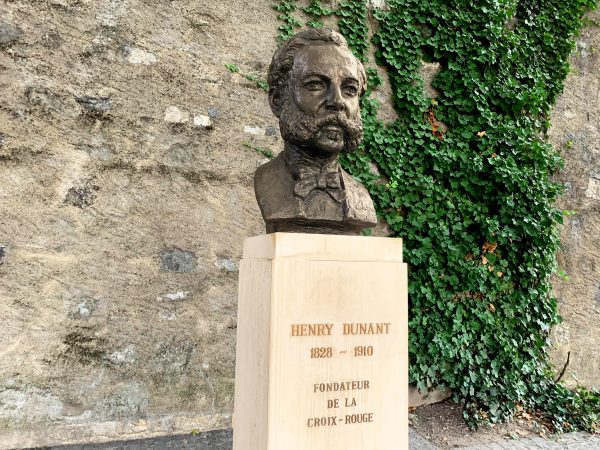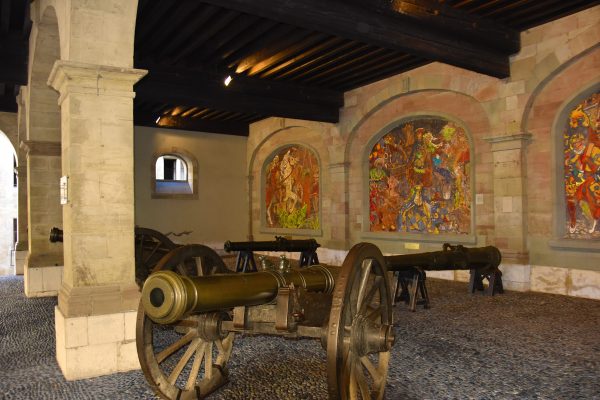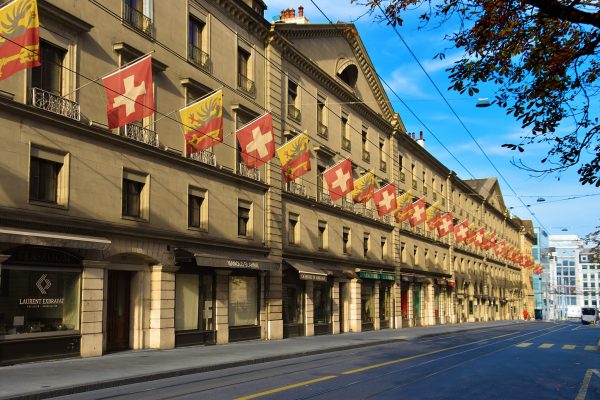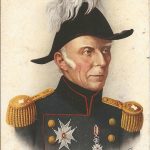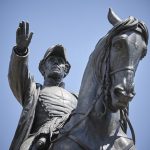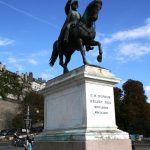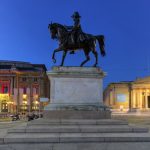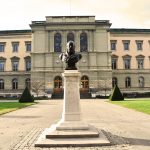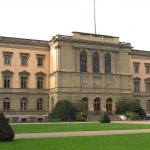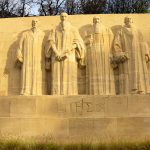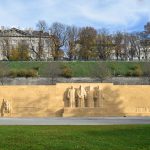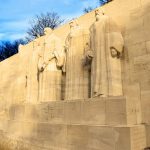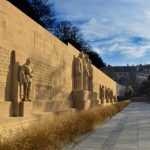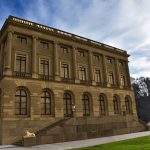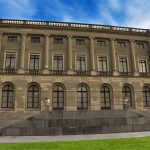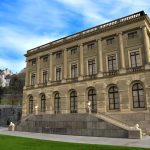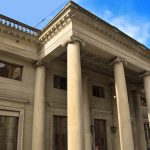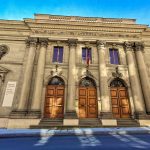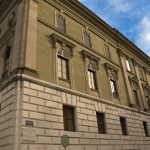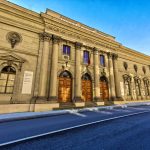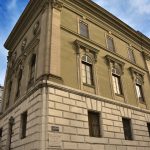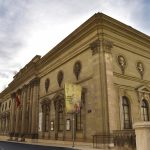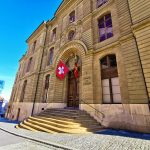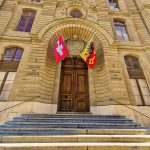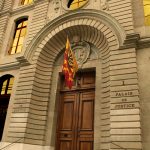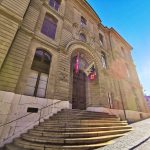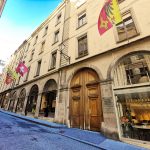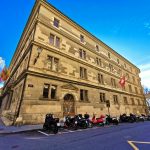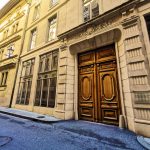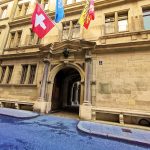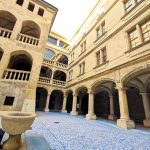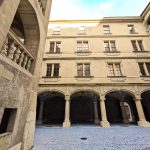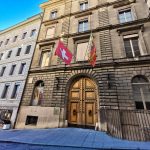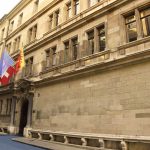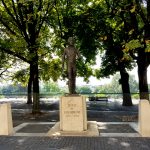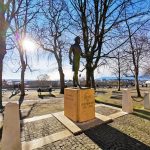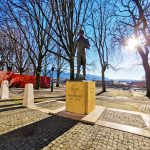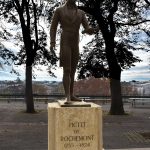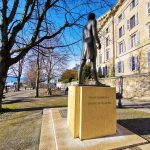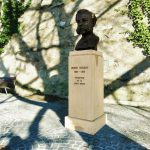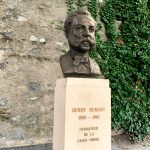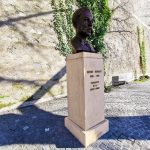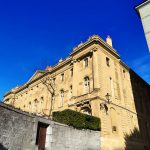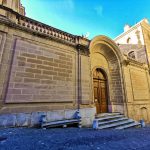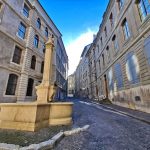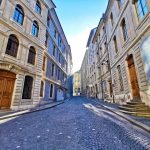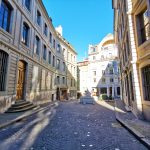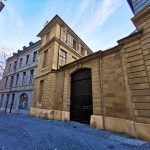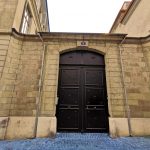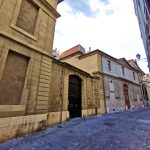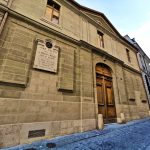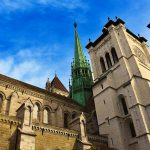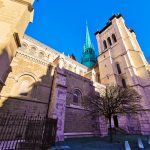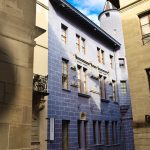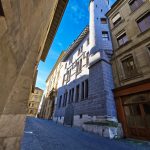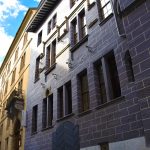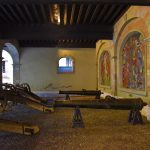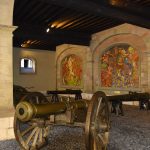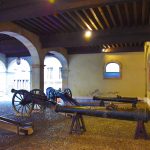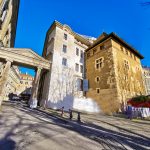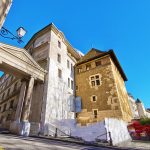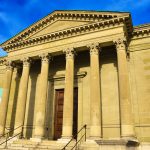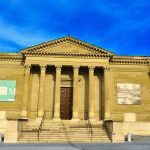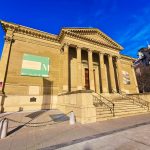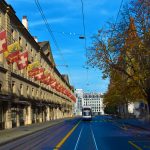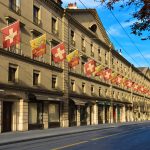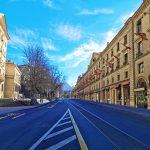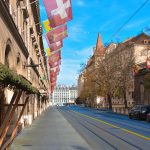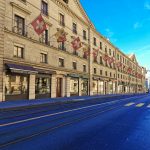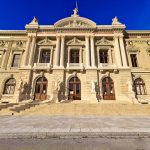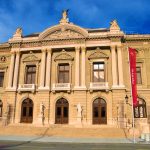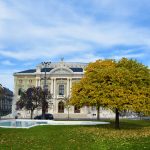Petit Train de Genève - Ligne 1 : Vieille-Ville
Explorez l'histoire de Genève à bord de notre petit train touristique.
Plongez au cœur de l'histoire avec le Petit Train de la Vieille-Ville. Ce circuit vous emmène dans un voyage à travers les siècles, au milieu des ruelles pavées et des places emblématiques. Écoutez les récits captivants sur la Cathédrale Saint-Pierre, la Place du Bourg-de-Four et les secrets des maisons anciennes. Ce tour en petit train vous emmène dans un voyage unique.

Retour dans le passé à travers la Vieille Ville de Genève
1. Dufour equestrian statue.
La staute équestre du Général Dufour. Né en 1787 Guillaume-Henri Dufour devint officier supérieur de l’armée suisse, installa une académie militaire, modernisa les fortifications du pays, reconstruit les quais et ports de Genève, enseigna l’hydrologie la géodésie et la géométrie à L’Université, dirigea l’établissement de relevés géodésiques et de triangulation afin d’obtenir des cartes complètes de la superficie montagneuse de la Suisse qui sont encore utilisables. Il devint membre du comité des Cinq de la Croix-Rouge, présida les réunions internationales qui approuvèrent la première et la seconde convention de Genève.
3. Le Mur des Réformateurs
Le Mur des Réformateurs, construit en 1917 en granit et en quartz d’une longueur de 100 mètres et de 10 mètres de haut, a été conçu pour commémorer des évènements et des hommes dans le mouvement de la Réforme religieuse du christianisme. Au centre, s’élèvent quatre statues d’hommes qui ont joué un rôle capital: Farel, Calvin, Bèze et Knoz.
4. Le Palais Eynard
Le Palais Eynard a été édifié en 1821 dans un style néo-grec. Il servait de centre culturel où se tenaient des réunions et où l’on donnait des conférences qui ont toujours servi de centres à la vie sociale de la ville. Aujourd’hui les salles de réception servent aux activités sociales du Conseil administratif.
6. Le Palais de Justice
Le Palais de Justice, situé sur la place du Bourg-de-Four, ancien forum romain, et l’un des centres animés de la vie genevoise actuelle. Cet édifice a été construit de 1707 à 1712 sur un ancien convent de Clarisses. A la Réformation il devint un hôpital. Il constitue un des plus beaux édifices de Genève. Dans la première cour, une jolie fontaine de 1709.
7. The Town Hall
L’Hôtel de Ville datant du 16e et 17e siècles, dont la partie plus ancienne, la tour Baudet, fut construite en 1455. Dans la cour, une tour carrée contenant une rampe pavée, voûtée de croisées d’ogives dessert les divers étages. Cette rampe permettait autrefois aux fonctionnaires importants de se rendre aux assemblées a cheval, en litière ou en chaise à porteurs. Le portail qui se trouve en bas de la rampe est d’un style Renaissance, autrefois il servait d’entrée à la Maison de Ville. Au rez-de-chaussée se trouvent diverses salles dont l’une se nomme ALABAMA. Dans cette pièce fut signée, le 22 août 1864, la première convention de la Croix-Rouge, appelée la Convention de Genève. A l’entrée à droite se trouve le banc de pierre où la justice genevoise rendait ses arrêtés et c’est ici que fut condamné Jean-Jacques Rousseau.
12. L'Hôtel Résident de France
Hôtel du Résident de France, au n°11 de la Grand’Rue. L’architecture est de style Louis XIV.
13. Au n°9 de la rue Calvin
Au n°9 de la rue Calvin, s’élève la maison de la famille Jacques Necker, un financier d’origine allemande, qui était citoyen de Genève quand Louis XVI en fit son ministre des Finances et le nomma baron. C’est probablement le premier hôtel bâti à Genève entre cour et jardin. On y travaillait en 1702. Au 1er étage, très beau salon Louis XVI.
15. La Cathédrale St-Pierre
Cathédrale St-Pierre. L’édifice actuel a succédé à plusieurs sanctuaires romains, à une petite basilique du IVème siècle et à une grande église élevée, vers 515. La construction de la cathédrale a commencé vers 1160, presque achevée en 1232, d’un style roman et gothique. La façade d’entrée date du XVIIIe siècle et est de style néo-classique. Visite possible du site archéologique à droite de l’entrée principale (5.- frs). Il est aussi possible d’accéder au sommet d’une des tours de la cathédrale où vous aurez une vue panoramique sur tout Genève.
16. House Tavel
Maison Tavel, la plus ancienne demeure privée de la ville, édifiée sur des fondations datant du IXe siècle, reconstruite en 1334 après un incendie qui détruisit une bonne moitié de la ville. Elle est caractérisée par sa tour ronde, ses fenêtres à meneaux, ses encadrements, ses sculptures, entre autres dix têtes humaines et animales. Une niche est sculptée au-dessus d’une fenêtre du rez-de-chaussée représentant les armoiries de la famille Tavel, nobles genevois qui ont donnée leur nom à cette maison. A l’intérieur, les salles et les caves restaurées avec goût, apportent une bonne connaissance de l’histoire genevoise du 14e au 19e siècle. Ce monument abrite le Musée du Vieux Genève.
17. Ancien Arsenal
Ancien Arsenal. Ce bâtiment avec ses vastes arcades date de 1632 et servi longtemps d’arsenal d’où l’origine de son nom. Actuellement s’y trouvent les archives de Genève. Sous les arcades cinq vieux canons, que les Autrichiens avaient emportés à Vienne en 1814 et qu’ils restituèrent à la République de Genève. Sur le mur du fond, trois mosaïques représentant de gauche à droite l’arrivée de Jules César à Genève, les foires commerciales du XIVe siècle et l’accueil des réfugiés protestants.
19. Rath Museum
Musée Rath, inauguré en 1825, ce fut le premier musée des beaux-arts ouvert au public dans toute la Suisse. Pendant la première Guerre mondiale, le Comité international de la Croix-Rouge y installa une agence de fichiers, pour enregistrer les listes de prisonniers et leur faire parvenir secours et courrier.
20. La Rue de la Coraterie
Il existait un manège avec tous les métiers liés à l’élevage des chevaux dont les « Corratiers » qui étaient des maquignons. Pendant les foires, le marché aux chevaux se tenait dans cette rue qui s’appelait « Carreria corrateriae equorum ». Le nom Corraterie peut s’appliquer aussi bien au courtage proprement dit qu’à la course des chevaux.
22. The Conservatory of music
Le Conservatoire de musique construit en 1856 par la famille Bartholoni, riche en mélomane.

